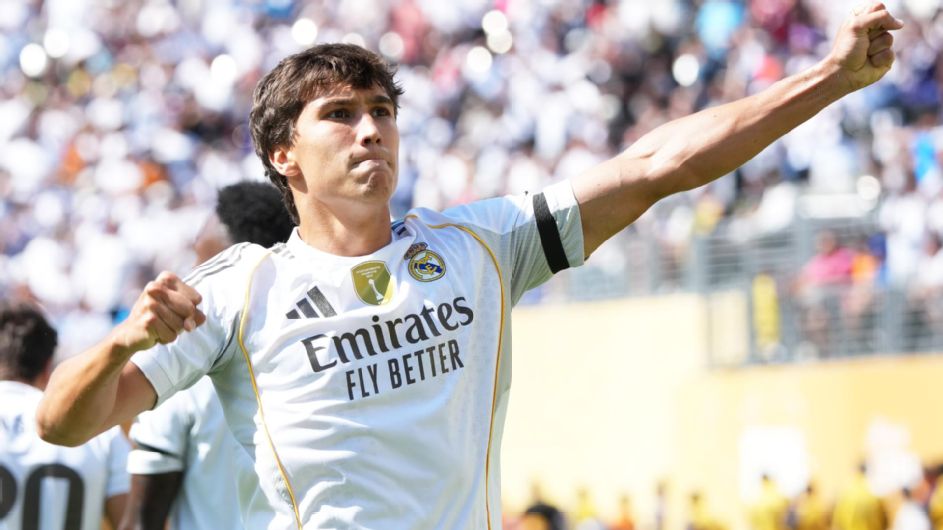In a candid post-match assessment, Borussia Dortmund coach Niko Kovač expressed his dissatisfaction with the playing conditions at MetLife Stadium, suggesting the field was more suited for golf than high-level soccer. This critique followed Dortmund’s narrow 3-2 loss to Real Madrid in the Club World Cup quarterfinals, held on a sweltering afternoon in East Rutherford, New Jersey.
Kovač’s comments highlighted two main concerns: the quality of the pitch and the oppressive summer heat. “It’s more a golf green, so you can putt here,” he remarked, pointing out the short grass and inadequate watering. “This is not the grass we are used to playing on in the Bundesliga and also in the other two stadiums,” he added, referencing their previous matches at Cincinnati’s TQL Stadium and Atlanta’s Mercedes-Benz Stadium.
Field Conditions Under Scrutiny
The MetLife Stadium, a key venue for the Club World Cup semifinals and championship, and the site of next year’s World Cup final, has come under fire for its pitch conditions. Kovač criticized the lack of proper watering, which he said resulted in a dry and sticky surface. “When it’s too dry, it’s unbelievable. It’s sticking,” he noted, suggesting that the field’s maintenance did not meet the standards expected for international tournaments.
These concerns are particularly pressing as similar conditions are anticipated for the upcoming World Cup, where 11 venues across the U.S. will host matches. Most of these stadiums lack roofs or air-conditioning, raising questions about player safety and match quality.
Heat Poses Challenges for Players
The heat was another significant factor affecting the match. At kickoff, temperatures soared to 86 degrees Fahrenheit (30 degrees Celsius), with Kovač lamenting the impact on player performance. “We played two times in Cincinnati. The first time it was 12 o’clock. The second time it was 3 p.m. and the pitch we had temperatures of around about 45 degrees (113 degrees Fahrenheit),” he recounted.
“When the temperature is 45 degrees, this is not amazing. This is very hard for someone, and the players, they must play these games,” Kovač emphasized.
The coach suggested that later kickoff times could mitigate the heat’s impact, allowing for more intense and aggressive play. “As a supporter, as a spectator, you would like to see intensive, aggressive, up-and-down football. So when it’s too hot, then it’s difficult to play this kind of football,” he explained.
Historical Context and Future Implications
This is not the first time heat has been a concern in U.S.-hosted tournaments. During the 1994 World Cup, 28 of 52 matches had kickoff times from noon to 2 p.m. EDT, primarily to accommodate European viewers. However, this scheduling often placed players in challenging conditions.
With the 2026 World Cup on the horizon, these issues are gaining renewed attention. Kickoff times for the tournament’s 104 games are expected to be finalized after the draw in December. As global temperatures rise, the need for adaptable scheduling and improved stadium facilities becomes increasingly critical.
The debate over suitable conditions for international soccer continues, with Kovač’s comments adding to the discourse. As the sport’s governing bodies prepare for future events, balancing player welfare with logistical demands will be essential to maintaining the integrity and excitement of the game.
 Everton’s Strategic Move: Thierno Barry Signing Threatens Rivals Wolves and West Ham
Everton’s Strategic Move: Thierno Barry Signing Threatens Rivals Wolves and West Ham Brumbies vs. British and Irish Lions: Key Details and Match Preview
Brumbies vs. British and Irish Lions: Key Details and Match Preview Giannis Antetokounmpo Responds to Criticism from Stephen A. Smith
Giannis Antetokounmpo Responds to Criticism from Stephen A. Smith Wimbledon Legends: Ranking the Most Prolific Champions in Tennis History
Wimbledon Legends: Ranking the Most Prolific Champions in Tennis History Ken Ken’s Triumph: A Landmark Victory in 2025 AMA USSE Championship
Ken Ken’s Triumph: A Landmark Victory in 2025 AMA USSE Championship